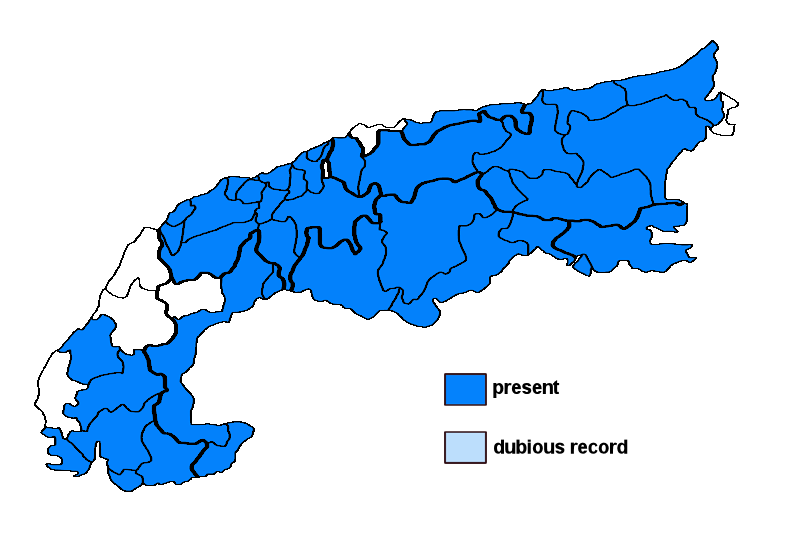Lepraria finkii (B. de Lesd.) R.C. Harris
Syn.: Crocynia aliciae Hue, Crocynia finkii B. de Lesd., Crocynia lobificans auct. non (Nyl.) Hue, Crocynia mollissima B. de Lesd., Crocynia sciatropha Hue, Lepraria aeruginosa auct. p.p., Lepraria lobificans auct. non Nyl., Leproloma lobificans auct. non (Nyl.) Boistel
Lichenised.
Substrate: bark, living mosses, lignum, rocks,
Altitudinal range: from the mesomediterranean belt (potential vegetation: evergreen broad-leaved forests dominated by Quercus ilex) to the subalpine belt (potential vegetation: open, taiga-like forests dominated by Larix decidua and/or Pinus cembra and Rhododendron)
Note: one of the most common species of the genus, found in the lower parts of trunks, but also on rocks, lignum, soil and mosses, also occurring in rather polluted areas and on faces wetted by rain. This species was mostly called L. lobificans, but the type of that species proved to be identical with L. santosii; widespread throughout the Alps.
Austria: Vorarlberg; Tirol; Salzburg; Kärnten; Steiermark; Oberösterreich; Niederösterreich (incl. Wien); Germany: Oberbayern; Switzerland: Appenzell; Bern; Fribourg; Glarus; Graubünden; Luzern; St. Gallen; Schwyz; Ticino; Uri; Unterwalden; Vaud; Valais; France: Alpes-de-Haute-Provence; Haute-Alpes; Alpes-Maritimes; Isère; Vaucluse; Var; Italy: Friuli; Veneto; Trentino Alto Adige; Lombardia; Piemonte; Liguria; Slovenia: Alpine and Pre-Alpine Slovenia; Trnovsky Gozd;





